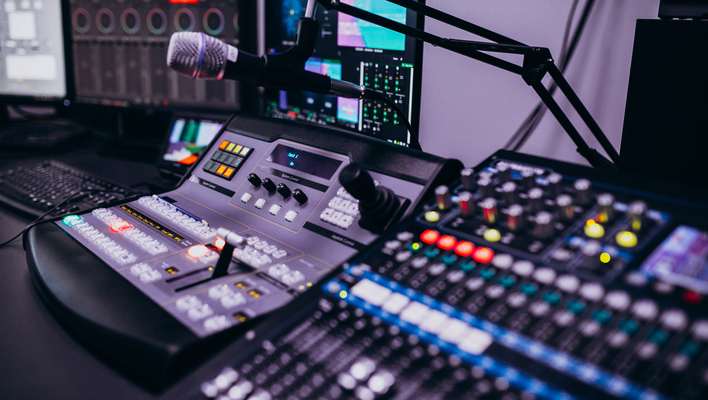One of the most important components of a sound system is the amplifier. It doesn’t matter whether it’s for your home theater, or car audio system because amplifiers are crucial to the overall performance of all music systems. Although there are many different amplifier types and brands, audio enthusiasts can’t seem to end the discussion about the digital amp vs. analog amp.
Which do you think sounds better? First, it’s important to understand what these two amplifiers do, the working mechanism behind them, and their differences.
Analog Amp
Analog amplifiers were first invented in the 1930s but so far, they have seen massive innovations. The term “analog” refers to how these amplifiers work on continuously variable quantities (that are analogous).
An analog amplifier is simply an electronic device that takes in a low-power analog signal and amplifies it to an output signal with the same amplitude as the input. This enables the amplified signal to travel over long distances without a significant loss in strength or clarity.
How Analog Amps Work
Analog amps work by drawing energy from the power supply to increase the amplitude of the input signal. They use transistors to regulate and release power to the speakers. An analog audio amplifier works like a machine moving power from the wall and turning it into more power for your speakers.
Advantages of Analog Amps
- Produce clearer and warm sound that’s soothing to the mind
- They are less costly to maintain and repair
- They can comfortably work with analog sources and digital sources containing a DAC
Limitations of Analog Amplifiers
- They are more expensive compared to digital amps
- They are prone to distortion and saturation
Digital Amp
A digital amplifier is a device that amplifies the signal from an audio source to make it louder. It’s said to be digital since it uses a series of electronic steps or binary codes to amplify the sound.

Although the first digital amp was invented in the 1950s, digital amplifiers became more popular towards the first decade of the 21st century. Digital amps are used in different applications such as audio and video amplifiers, medical monitoring devices, and telecommunication devices.
They use high-frequency switching circuitry to modulate the power they send out.
How a Digital Amplifier Work
A digital amp is built using electronics that work to amplify the sound waves. Upon receiving a digital input from the source, the amp digitally converts it to a pulse width modulation which then produces a high voltage signal replicating the original sound.
Digital amplifiers have smaller components and use less energy than their analog counterparts. This characteristic enables them to work faster without overheating and less ventilation.
Benefits of Digital Amps
- Digital amplifiers cost less compared to analog amps
- They use less power and generate less heat
- Digital amplifiers are light in weight
- They are easy to use and don’t require any special setup
- You also get to enjoy high gains without distortion and low noise levels
Limitations of Digital Amps
- It doesn’t offer the same natural sound as an analog amplifier
- If something goes wrong, there’s no way to fix it easily without replacing parts
The Difference between an Analog Amp and a Digital Amp
While an analog amp only takes and amplifies an analog signal in its original shape, the digital amp takes binary numbers, converts them into an analog form, and then amplifies the result.
Analog amps work on the input early into the process, while digital systems preserve the input signals as binary numbers and do the digital to analog conversion towards the end. Because of this, digital amps provide cleaner and clearer sound than analog amplifiers, as noise is less likely to be at the digital to analog conversion that takes place towards the end.
Analog amps are also more expensive and require more power compared to digital amps.
Digital amplifiers possess a higher overload capacity compared to analog amps. Following this, digital amps can maintain their saturation zone position during amplification, which helps minimize distortion.
The digital amp can avoid transient intermodulation distortion as it does not use the ‘negative feedback circuits’, which must be used with analog amplifiers during power conversion.
Unlike in analog amps, where the signal is constant, digital amps are switching amps meaning that the signal is either on or off at a certain point.
Digital amps are generally more accurate than their counterparts as their parameters are controlled digitally. This feature enables the digital amps to easily provide both higher output power and lower distortion levels at frequencies above 1 MHz
Which Will Serve You Better in Terms of Sound Quality?
The battle between digital and analog amplifiers in terms of sound quality has been going on for years. Although many factors come into play when considering which amp is best for you, there is no right or wrong choice.

The right type of amplifier for you will depend on your preferences, budget, and the kind of musical experiences you desire. For starters, analog amplifiers generally sound better than digital amps. This emanates from the fact that it uses tubes that make it possible to produce a warmer sound than digital amps.
In addition, analog amps can recreate the original sounds more accurately and naturally. On the other hand, a digital amplifier will have an artificial quality that can make it seem like you’re listening in surround sound.
A digital amp will offer you clearer sound with crisper highs, fuller lows, and less noise. This clarity in sound enables you to turn up the volume on your speakers less than that of an audio source playing through an analog amplifier.
Final Thoughts
Digital and analog amps have their advantages and shortcomings. Therefore, it’s up to you to carefully consider your needs, preferences, and budget before making any purchase. Take your time to read widely, compare pricing, and check out your amp’s compatibility with other components. Ask questions and consider previous customer reviews to get the best amp for your money’s worth.
